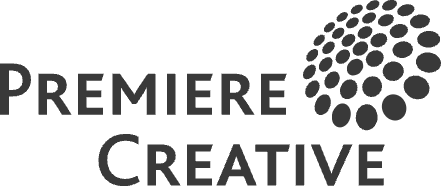For years, SEO tactics like keyword stuffing, buying backlinks, relying solely on exact match domains (EMDs), churning out dozens of 300–500-word blogs, focusing only on desktop optimization, and targeting every possible keyword variation worked like a charm for boosting web rankings quickly. But in 2025, these outdated methods do not work and can actually hurt your site’s chances of ranking at all.
Today, search engines like Google, Bing, DuckDuckGo and others prioritize quality, user intent, and genuinely helpful content. With the rise of AI-powered search, mobile-first indexing, and constant algorithm updates, you need to break up with your toxic SEO tactics and get to know the new rules of SEO success.
Why Old SEO Tactics Died
Today, the old ways of SEO just can’t keep up with new technologies and user interfaces. The rise of AI, more frequent algorithm updates, mobile-first indexing, and a more competitive digital landscape pushed the old SEO tactics to the wayside, forcing website owners to switch their game plan. Still skeptical about why the old shortcuts and tried-and-true techniques no longer work? Let’s explore some old “black hat” SEO tactics you need to ditch.
1) Keyword Stuffing
In the early days of SEO, keyword stuffing worked because search engine algorithms relied heavily on exact match keywords to determine ranking. At the time, the more often a blog or web page repeated a target keyword, the more authoritative the content appeared in the eyes of search engines. This resulted in widespread misuse, with many websites randomly plugging in EMD keywords into areas that don’t make sense.
Today, algorithm updates like Google’s Panda (2011), Hummingbird (2013), BERT (2019), and MUM (2021) have put the kibosh on keyword stuffing. These updates introduced a focus on the quality of content, a better understanding of search intent, and advanced AI models that interpret meaning, not just keywords. They also penalized thin, weak, and spammy content.
2) Buying or Trading Backlinks
Buying or trading backlinks was once a popular way to improve search rankings. Marketers would purchase links from other websites, often inserting them into unrelated content just to gain SEO value. This strategy worked because search engine algorithms emphasized sites and pages that were backlinked. Why did this work? Simple! Backlinks were viewed as votes of confidence, signaling that a site was credible and worth ranking.
Today, backlinks continue to exist and play a key role in website ranking. What’s changed is that you now need to earn backlinks naturally. Buying or trading them now counts as a “black hat” tactic—one that not only fails to deliver results but also severely harms your site’s performance. On some occasions, the penalty can even permanently de-index your site from search engine ranking.
3) Exact Match Domains (EMD)
There was once a time when websites with domains like “besttexasdentist.com” or “cheaphoteldeals.com” ranked higher than other sites. This occurred because these websites capitalized on EMDs or Exact Match Domains. SEO used to heavily rely on domain names as a way to rank. Domains that matched more precisely to a search query ranked higher than other sites, despite the site’s quality of content or lack thereof. This easy trick was widely popular among digital marketers who took advantage of EMDs by registering domains purely for their keyword value.
Surprise, surprise! This easy shortcut no longer works. Having an EMD will not give a site an advantage or disadvantage because the domain name no longer plays a role in ranking. Instead, marketers need to focus on valuable, high-quality content to rank higher. Remember that Google rewards websites with great content and who deserve those top positions on SERPs so start churning out great content.
4) Publishing Dozens of Short, Low-Value Blogs
During the old days of SEO, quantity over quality won the SEO game. This resulted in marketers cranking out hundreds of low-quality, short, keyword-stuffed blogs to blanket out the search results and ranks for as many terms as possible. This tactic was rewarded by search engines, no matter the quality of the actual content. This resulted in the first pages of search engines being flooded with poor content.
Luckily, this strategy is no longer valid as Google and other search engines have evolved to prioritize quality content over volume. Google’s Helpful Content Update and continuous algorithm changes now penalize weak, thin, and repetitive content. If a blog offers little or no new content or insights, the chances of that post ranking become slim. Today, 1,500-word blogs that thoroughly answer a question and properly utilize keywords and backlinks have a far greater chance of ranking on the first page.
5) Ignoring Mobile and User Experience
In the past, UI/UX, especially on mobile devices, was rarely considered by digital marketers. Websites were only ever designed with desktop users in mind, and mobile responsiveness was a complete afterthought. The load time, design quality, and mobile usability of a site didn’t impact the SEO ranking, so digital marketers and web developers didn’t spend time making websites with high-quality user experiences.
Today, high-quality UI/UX and mobile usability go hand-in-hand with ranking well on the web. A poorly designed website with slow loading times, difficult navigation, or poor mobile experiences will not rank well. In fact, Google utilizes mobile-first indexing, meaning that the algorithm evaluates the mobile version of a site before the desktop version, therefore determining a page’s ranking based on the accessibility and quality of the mobile experience. With that in mind, it has become crucial to ensure that a website has high mobile accessibility.
How to Audit & Update Your SEO Strategy
After hearing about which SEO tactics have now gone to the grave, it’s time to think about how many of those outdated strategies might be negatively affecting your website. If you feel that your site may need some sprucing up to better rank for SEO, you can leverage some helpful tools. Some of these tools include:
You can also add lots of free tools – in the form of Chrome extensions – to your arsenal. These chrome extensions allow you to perform various SEO tasks such as spotting redirect chain and HTTP errors, identifying broken links, measuring page speed for user experience, and tracking ranking movements on SERPs. Check out our blog for the top 11 SEO chrome extensions you should be using in 2025.
What Modern SEO Actually Looks Like
Modern SEO demands alignment with user search behavior and search engine evaluation methods. Success begins by crafting content around search intent, not by stuffing keywords. You need to understand what your audience really craves and craft content that directly answers those needs. Building topic authority through in-depth, related content and leveraging semantic SEO helps search engines see your site as a trusted resource.
Successful strategies also involve investing in high-quality, long-form, evergreen content that provides lasting value and stays relevant over time. Enhancing blog posts with multimedia like videos, infographics, and visuals, as well as using structured data, helps pages appear in rich results like featured snippets or FAQs. Behind the scenes, technical SEO and strong core web vitals (like fast load times, mobile performance, and interactivity) will secure and retain those high SERP positions.
Don’t Play the Old SEO Game—Redefine the Game
The old SEO game ended, and the “black hat” tactics that once tricked search engine algorithms are no match for today’s smarter, more user-focused strategies. If you want to succeed in today’s competitive SEO landscape, focus on what truly works: creating high-quality, intent-driven content, using a range of strategic keywords, optimizing mobile, and earning backlinks through value, not shortcuts.
Ready to update your SEO strategy and start ranking smarter? Contact Premiere Creative today at (973) 346-8100 to schedule your SEO consultation and take the first step toward real, measurable growth.

